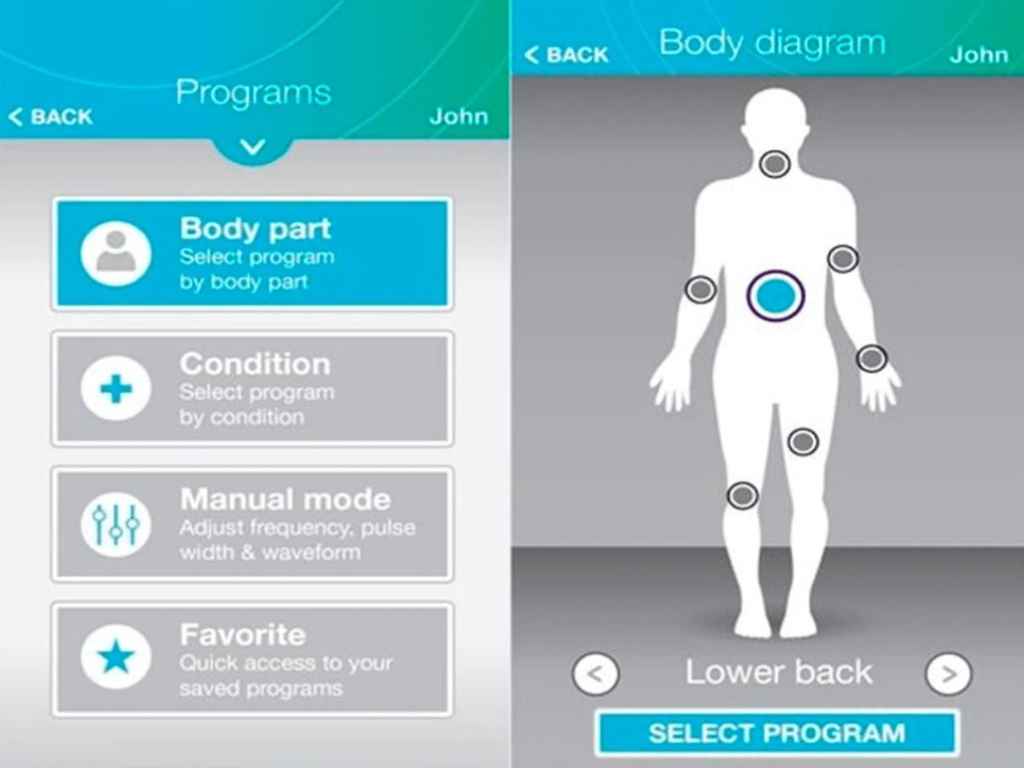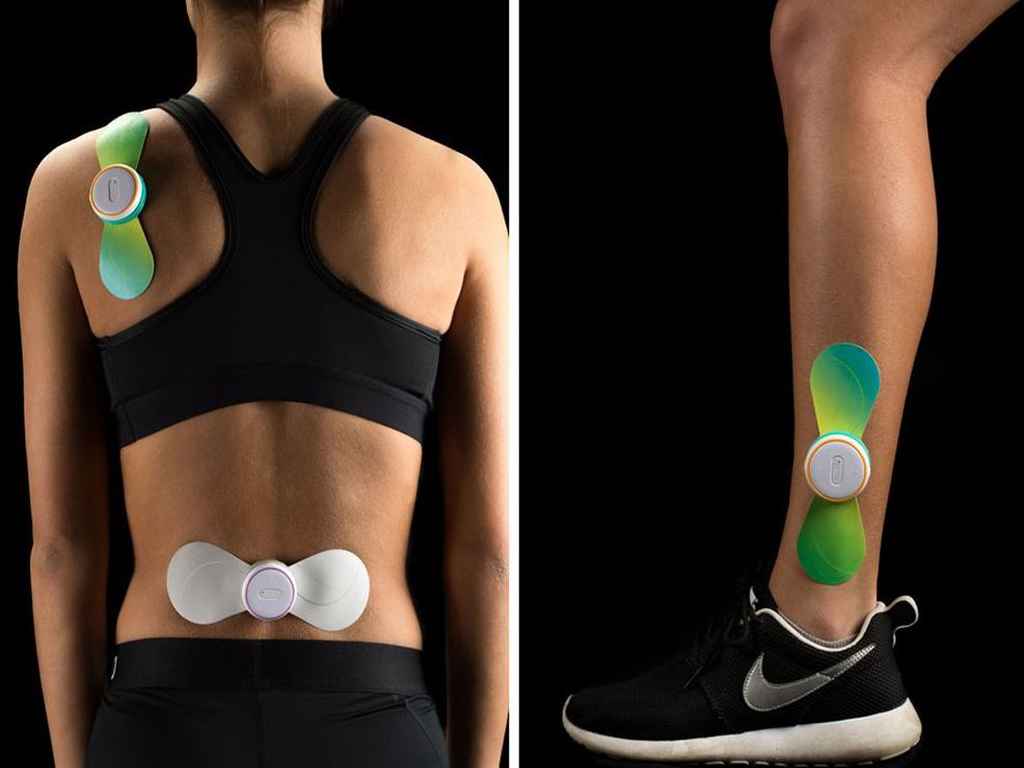Many people with health conditions seek help to manage the pain symptoms effectively. For example, if you have chronic pain or get injured, a physiotherapist can help you. Likewise, various tools are available to treat pain and improve physical well-being. A widely used technique is electrotherapy with an electrical stimulation machine. Electrotherapy devices like TENS and EMS help relieve pain, strengthen muscles, accelerate healing. Both TENS and EMS deliver low-voltage electrical impulses through the skin to stimulate the muscle or nerves. You may hear TENS and EMS in pain clinics or therapies, but they serve different functions. Nowadays, these devices are portable and suitable for use even when you’re at home or on the go.
TENS
How are TENS and EMS Different? Transcutaneous Electrical Nerve Stimulation (TENS) targets the nerves for pain relief. Essentially, a TENS machine sends electrical currents to excite the sensory nerves and reduce pain. The electrical stimulation causes the nerve pathways in the spinal cord to control to block pain signals from reaching the brain. In addition, it also induces the release of endorphins, which are the body’s natural pain relievers. Thus, these dual-action result in an overall decrease in pain perception. For people with chronic pain, the sensation can be debilitating. A TENS machine provides temporary relief naturally, lasting for a few hours. Additionally, a conventional standard TENS unit has a set of electrodes with wires. Meanwhile, the iTENS has wireless electrodes and sticky gel pads for more comfortable and efficient pain management.
The iTENS App and Features
The iTENS from iTENS Australia incorporates wireless technology with TENS and EMS therapies for optimal pain relief. It is the first wireless TENS device with FDA approval. In particular, the iTENS wireless electrodes connect to a smartphone app via Bluetooth. From the app, you can access various pre-set therapies or personalise your treatment. You can also track your session and gain tips from the smartphone app. Mainly, you can manage pain through the following programs in the app:
- Body Diagram – The treatments have default settings according to specific body parts. For example, you can choose stimulation for the shoulder, legs, upper back, hip, knee, elbows, and feet.
- Conditions – Treatment based on ailments like arthritis, sciatica, fibromyalgia, bursitis, abdominal cramps, and ankle tendonitis. The parameters are not adjustable except intensity.
- Manual Mode – Create custom parameters based on body parts, pulse rate, pulse width, waveforms, and treatment time.

EMS
Similar to TENS, Electrical Muscle Stimulator (EMS) uses electrodes to generate small electrical currents. However, instead of stimulating the nerves, EMS targets key muscle groups. An EMS machine sends modulated frequencies to contract and relax the muscles. In particular, the electrical impulses follow the same patterns when you do physical exercise. As a result, the involuntary contractions help strengthen and tone weak muscles. Furthermore, it increases blood flow minimising swelling or inflammation of sore muscles. In addition, people with injuries use TENS and EMS for faster recovery. EMS improves blood circulation, thereby aiding in faster recovery and rehabilitation of muscles. Here are some of the benefits of using EMS:
- Strengthen weak muscles
- Reduce inflammation and soreness
- Prevent muscle atrophy
- Reduce muscle spasms
- Prevent blood clots
- Increase range of motion
- Accelerate healing
- Retrain muscles
TENS and EMS Applications
What should you choose between TENS and EMS machines? TENS is best for relieving activity-induced pain or musculoskeletal injuries. You can use TENS while working or doing chores. Meanwhile, EMS causes muscle contractions for strengthening, relaxing, and toning. You can use an EMS machine before and after a workout. Additionally, TENS relieve acute and chronic symptoms, including pain from injuries or post-surgeries. On the other hand, EMS relaxes the muscles and facilitate faster healing and muscle growth. Lastly, TENS provides a wider range of signals in terms of frequencies, pulses, and intensities. In contrast, EMS have narrower functions. You can use an EMS machine on one muscle group at a time, alternating muscle groups every day. Athletes often use TENS and EMS in their programs to improve muscle performance and lessen pain.
iTENS: the TENS and EMS Combo Machine
Modern e-stim machines like the iTENS combine TENS and EMS functions for a more potent effect. The iTENS features different programs for pain management and also for muscle relaxation. In particular, the iTENS app has modes for muscle massage and relaxation. It also provides muscle spasms relief. In addition, the manual mode of iTENS lets you customise your settings to achieve optimal pain relief. It is best to start with the lowest available frequency. You will feel a mild, tingling sensation as you start a program. As your body adapts to the stimulation, you may gradually increase the intensity until you reach a strong but comfortable level. However, avoid turning the settings too high to avoid worsening the pain. You may also use the iTENS alone, but you will not be able to adjust the settings.

TENS and EMS Unit Placement Guides
Using the wireless iTENS is more effortless than standard wired TENS and EMS units. In particular, the absence of wires on iTENS makes it convenient to place the pads in most body parts. The gel pads stick firmly on the skin without causing irritation. In addition, the pads are light, slim, and flexible, making them discreet under the clothes. To use the iTENS, identify the area where you feel the most pain. Then, position the pads on clean, dry skin over the painful region, avoiding joints or tendons. As a general guide, do not place the electrode pads anywhere near the head, throat, or upper neck. Also, do not use TENS on open skins or wounds.
Starting the iTENS TENS and EMS unit is easy. First, position the pads and launch the smartphone app. From the app, choose your treatment or set your parameters. Then, the device will begin the stimulation right away. A single session can last for 15 to 30 minutes. In addition, you may use TENS many times a day as needed. However, ensure that you allow at least 20 minutes break in between. After the treatment, turn off the unit before removing the pads. In addition, store the pads in a clean storage bag included in the kit. It is good to clean the pads regularly with a damp cloth as the gel residues accumulate.
Guide in Using the iTENS
The iTENS machine unit is a risk-free and non-invasive way to manage pain and relax the muscles. In addition, they do not have adverse side effects, unlike oral medications. Therefore, it is safe to use them frequently. In particular, the iTENS enables you to manage pain while you are working without limiting the movement. For best results, consult your doctor or therapist before using TENS and EMS. However, do not use TENS and EMS if you have cancer, epilepsy, heart disease, seizures, and cardiac pacemaker. TENS and EMS are available without a prescription. Visit iTENS Australia online for more information.




















